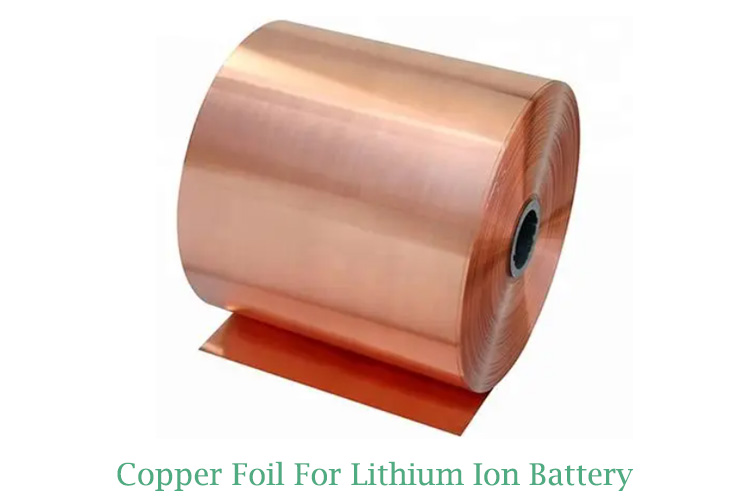Lithium-ion batteries have revolutionized the way we store and use energy in our everyday lives. These batteries power our mobile devices, electric vehicles, and even renewable energy systems. At the heart of these batteries lies a critical component called copper foil. In this blog post, we will explore the significance of copper foil in lithium-ion batteries and delve into its properties and applications.

Copper foil is a thin sheet of copper that serves as one of the key components in the construction of lithium-ion batteries. It is typically manufactured through a rolling process, resulting in a smooth and uniform foil with exceptional electrical conductivity. The thickness of copper foil used in lithium-ion batteries can range from a few micrometers to tens of micrometers.
Excellent Electrical Conductivity: Copper is renowned for its high electrical conductivity, making it an ideal material for facilitating the flow of electric current within the battery. This property ensures efficient energy transfer and helps minimize power losses, ultimately enhancing the battery's performance.
High Mechanical Strength: Copper foil exhibits excellent mechanical strength, allowing it to withstand the demanding conditions inside a lithium-ion battery. It maintains its structural integrity even when subjected to continuous cycling, temperature fluctuations, and physical stress, thereby ensuring the longevity and reliability of the battery.
Thermal Conductivity: Copper has exceptional thermal conductivity, which enables effective heat dissipation within the battery. This property is crucial in preventing the build-up of heat, which can be detrimental to the battery's performance and safety. Copper foil helps in maintaining the optimal operating temperature range for the battery.
Flexibility and Ease of Handling: Copper foil is highly flexible, enabling it to conform to the irregular surfaces and contours within the battery.
This flexibility facilitates the manufacturing process and simplifies the assembly of battery components. It also allows for the design of batteries in various shapes and sizes, catering to diverse applications.
Current Collector: Copper foil acts as a current collector in lithium-ion batteries, ensuring the efficient flow of electrons between the electrodes. It is typically used as the anode current collector, where it collects the electrons generated during the battery's discharge process.
Electrode Coating: Copper foil is coated with active electrode materials, such as lithium nickel cobalt aluminum oxide (NCA) or lithium cobalt oxide (LCO), to form the positive electrode (cathode) of the battery. The precise and uniform coating of these materials on the copper foil enhances the battery's energy storage capacity.
Conductive Agent: Copper foil also serves as a conductive agent within the battery. It helps distribute the electrical current evenly across the electrode's surface, maximizing the battery's overall performance and efficiency.
Copper foil plays a crucial role in the construction and performance of lithium-ion batteries. Its exceptional electrical conductivity, mechanical strength, and thermal conductivity contribute to the battery's efficiency, reliability, and safety. As the demand for high-performance energy storage devices continues to grow, the importance of copper foil in lithium-ion batteries cannot be understated. Through further research and development, we can expect copper foil to be optimized for even better performance and contribute to advancements in energy storage technology.
Contact: Jason Wang
Phone: 13580725992
E-mail: sales@aooser.com
Whatsapp:13580725992
Add: No.429 Guangming Road, Shenzhen City, Guangdong Province
We chat
